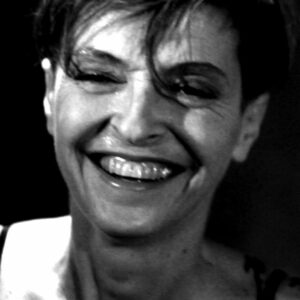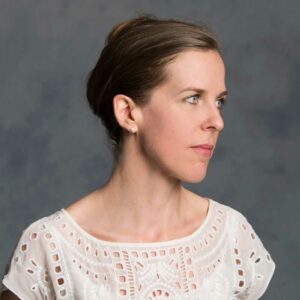Itai Erdal
Finalist, 2018, 2024
Image: Name, Title, Description
01

Biography
Itai Erdal is an acclaimed lighting designer, writer, performer, and the founder of The Elbow Theatre in Vancouver. With over 300 lighting designs for theatre, dance, and opera across more than 50 cities in North America and Europe, his work includes collaborations with notable companies such as the Stratford Festival, Vancouver Opera, and Arts Club. His accolades include six Jessie Richardson Awards, a Dora Mavor Moore Award, and the Edinburgh Lustrum Award, among others.
Last updated November 2024.
Itai, on being shortlisted for the 2024 Siminovitch Prize
To the members of the jury – thank you so much. To my fellow nominees: Sonoyo, Deb and the Trouts – it is an honour to be nominated with you; you all inspire me. To the Siminovitch family, board and staff – thank you for everything you do; it is much appreciated. I had the pleasure of meeting Lou Siminovitch when I was shortlisted for this award six years ago, and he was impressive and delightful.
Like any good Jewish boy, I have to start by thanking my mother, who opened me up to all the arts and took me to see Jean Anouilh’s Antigone when I was 14 years old. I will never forget the scene when Haemon begs his father Creaon to save Antigone and (I am paraphrasing, but he says something like): “Be almighty like you were when I was a kid, save my girlfriend. The world will be too bare; I shall be too alone if you force me to disown you.” And Creon replies: “The world is bare, Haemon. You are alone. I am not almighty. Look straight at me; see your father as he is. That is what it means to be a man.” These twenty-five-hundred-year-old words went straight to my heart, and the 14-year-old me felt like they were written about me and my father, and I understood the power of the written word and fell in love with theatre.
When I emigrated to Vancouver in 1999, I left my entire family behind. Immigrating is hard. Starting a new life on the other side of the world without any financial help is really hard. But I’ve always been good at making friends and I quickly felt like I was adopted by a very warm Vancouver theatre community. I never went to theatre school; I learned lighting design by working as a technician. In 2002, Jonathan Ryder hired me as the venue tech at The Cultch, and I met some of the best lighting designers in Canada and saw how they worked, which was the best education I could ask for.
When someone bailed on Studio 58 two weeks before tech, I was at the right place at the right time, and Kathryn Shaw and Bruce Kennedy took a chance on me (both of them became close friends who watch my kid today). That first show I designed at Studio 58 in 2003 was directed by James Fagan Tait – a meeting that changed my life. Jimmy was a force of nature, a unique voice and a true artist, and we developed an artistic partnership and a friendship that saw us work on 14 shows together – including Crime and Punishment, which Jimmy adapted together with composer Joelysa Pankanea and Brian Pollock designed a gorgeous set that really allowed me to make some cool design choices. Crime and Punishment put us all on the map – everyone wanted to work with us after that show.
When I had a few months off between gigs, I emailed Vancouver’s top lighting designers, and Alan Brodie was kind enough to let me shadow him on three shows in a row. Alan’s generosity was remarkable – he was happy to share all his secrets with me, and he taught me the value of mentorship and community, and I’ve tried to be generous to every young designer who’s approached me since.
Sometimes, the fact that I was self-taught held me back, but mostly, it gave me a unique perspective: as an amateur, I didn’t know how things were supposed to be done, so I made them up as I went along—which gave my design a distinct look. Over the next two decades, that look has been refined, but the principles remained the same: move the story forward, make bold design choices while working within the director’s vision.
After a couple of years of designing in Vancouver, I put together a website, and I started emailing artistic directors around the country. This was the early days of the internet, and I was able to find email addresses for almost every AD in Canada, and I emailed them all. Almost half of them got back to me, and while the vast majority weren’t going to take a risk on a random guy who sent them an email, a few people in every city were curious and were willing to meet.
One of the first people to get back to me was Ross Manson, who told me he liked my work but he already had a lighting designer he worked with regularly. I told him it’s always good to meet new people, and he said, “ok, give me a call when you’re in town.” When I got to Toronto, I phoned him, and he sounded a little annoyed and said: “I already have a lighting designer I work with regularly.” I said, “I know, but it’s always good to meet new people.” He said: “Ok, meet me in Teronni in half an hour.” By the time I got there, he had already checked with his regular lighting designer and lucky for me, she wasn’t available and I impressed him enough in that meeting to get an offer to design The Four Horseman Project, an innovative fusion of dance, theatre and poetry that allowed me to use some really colourful glass gobos and was very well received, winning four Dora Awards, including one for lighting.
After The Four Horseman Project, I started working all over Canada, and I quickly realized that the country may be vast, but the theatre community is very small. When I moved to Canada, I was overwhelmed by its size – the West Coast felt like a country on its own, and Toronto and Montreal seemed as far away as the moon. Only a few years later, I’ve worked in every province, and today, I have close friends in almost every city in Canada. I can tell you where is the best Poutine in Halifax, the best Shawarma in Ottawa and the best coffee in Whitehorse. I’ve spent many fun nights at the Auburn in Calgary, at The Angel at Niagara on the Lake and at Down the Street in Stratford. (I know that two of these establishments are now closed, but you get the point).
I love theatre because it is the most collaborative art form, and I love making stuff with my friends. As a lighting designer, I get to be really intimate with a group of people for three or four weeks at a time, and when you do it for a long time, all your friends are in theatre, and you get to work with your friends again and again. I was lucky to meet Maiko Yamamoto and James Long (two Siminovitch Prize Laureates) early in my career. I designed the first four shows for their company, Theatre Replacement, and they became family. I showed them some of the footage I took of my late mother, and they were the first ones to encourage me to use that footage to create a show about her. James Long masterfully directed that show, which was called How to Disappear Completely, and was produced by two other good friends: Anita Rochon and Emelia Simington Fedy of The Chop Theatre.
This personal subject matter needed a theatrical device to help me stand on stage and tell this story, so How to Disappear Completely took the form of a lighting demonstration, and then lighting became a metaphor for life. I shared with the audience the tricks of my trade; I made them aware of the lighting and how it affects storytelling. I wrote an ode to my favourite instrument, the PAR can, to show how it gets warmer as it dims—and it made people cry because they thought about my mother’s life fading away. I showed them how to disappear on stage by taking a light down one percent at a time, and by doing that, I made sure my mother would never disappear because now she lives in the minds of all of the people who saw the show. Some of my favourite comments about the show came from directors who told me they learned more about lighting design in one hour of watching my show than in twenty years of directing. One of the highlights of my life was performing that show at the Stratford Studio Theatre and getting a compliment from Martha Henry, who told me that every actor can learn a lesson in stillness from me.
Theatre is the most ephemeral of all the arts; you have to be there to experience it, and lighting is the most ephemeral of all design elements. Lighting design often works subliminally – and yet, it can be more than an aesthetic; it can be the emotional heartbeat of the show. You can design the most beautiful set or costume, but they do not exist until they are touched by light.
In 2011, I started my own theatre company – The Elbow – because I wanted to do more than illuminate other people’s work; I wanted to make work that shone a light on issues that I am passionate about. I’ve written five plays for The Elbow, all of them with good friends, and I’ve performed in all of them. I can’t think of anything more exciting than getting into a rehearsal hall with my collaborators and creating a new piece of theatre. I have to thank my long-time producer, Patrick Blenkarn, my favourite collaborator and best friend, Anita Rochon and my very dedicated board of directors – I couldn’t have done it without you. I also have to thank all the many friends who have nominated me for this award in the past and have written amazing letters of support: Kathleen Oliver, Carmen Aguirre, Colleen Murphy, Joan MacLeod, Mindy Parfitt, Rachel Peake, Michael Shamata, Chris Abraham, and Jillian Keiley.
And lastly – I have to thank my family: my sisters and my father for always being so supportive, and to Susan and Ilan, who are my muse, my drive in life and the reason for everything that I do. I love you both more than I can express.
Thank you.
02
03
Simi News
Subscribe today to the monthly e-newsletter.
> Be the first to know about current artistic projects of the Siminovitch Prize community.
> Learn about emerging artists who are shaping the future of Canadian theatre.
> Stay informed about upcoming opportunities and calls for nominations.



